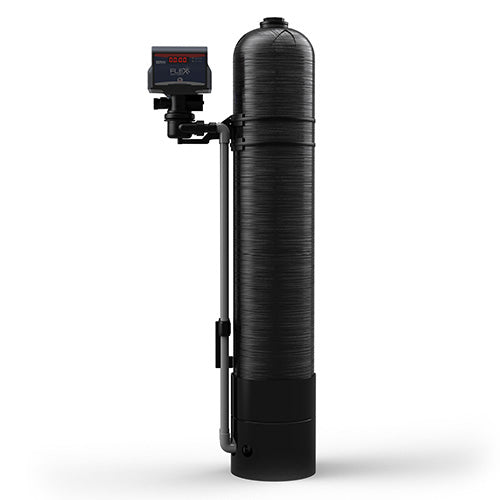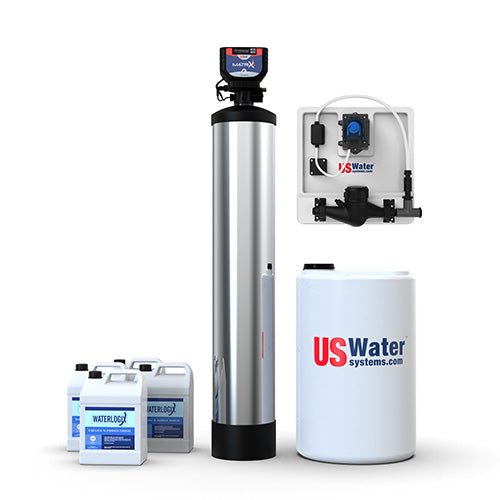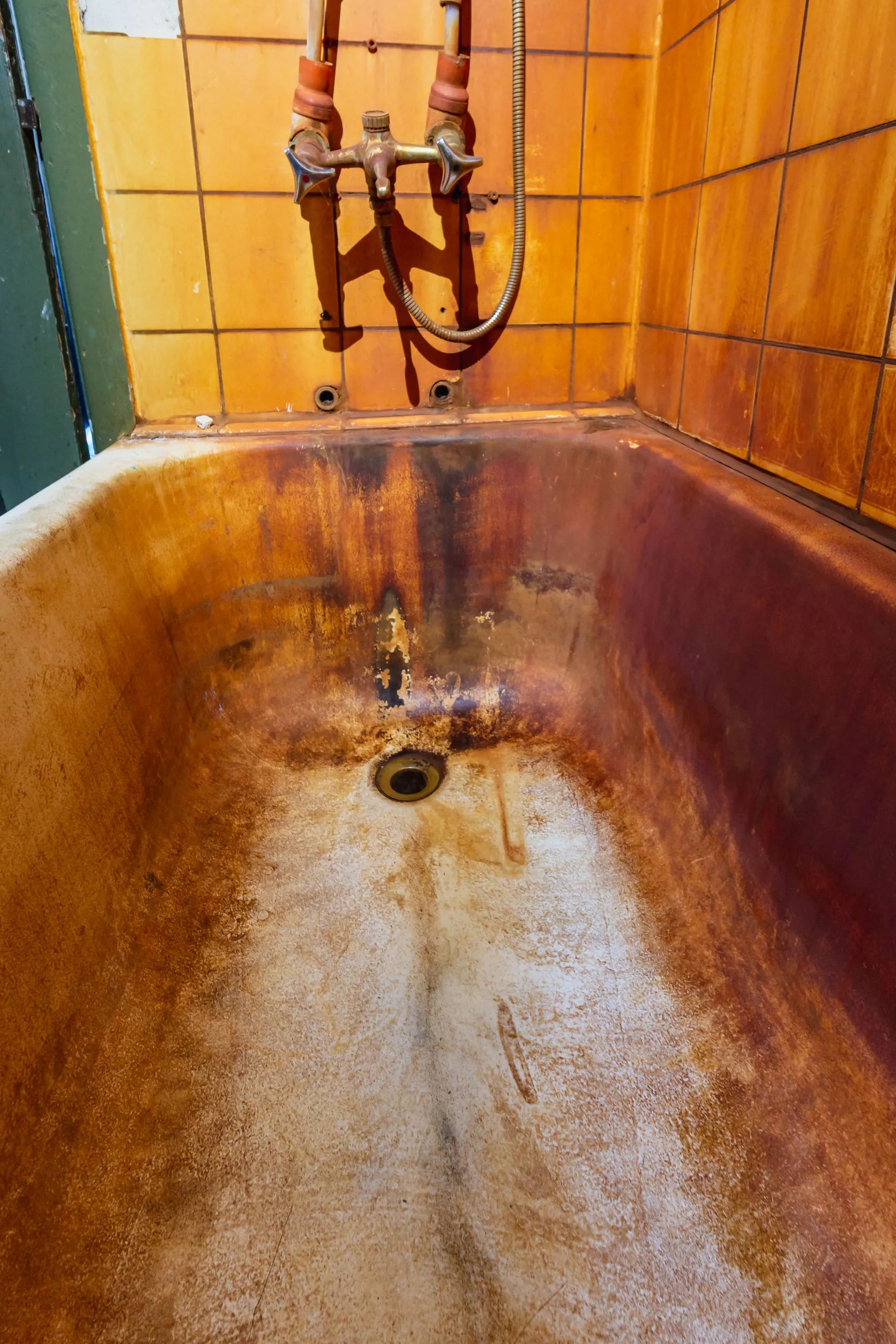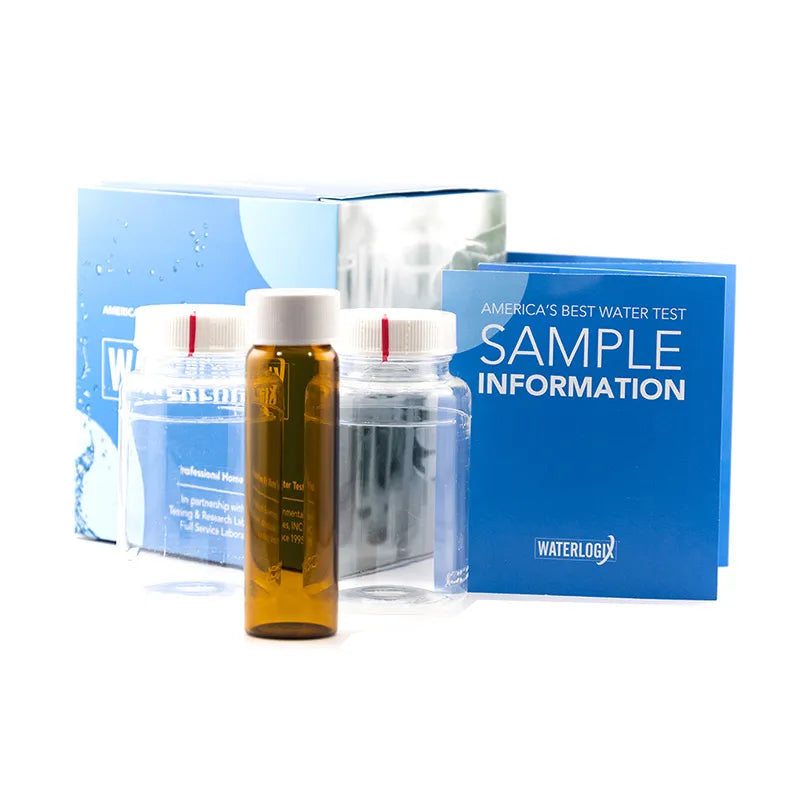Iron and Manganese
-
Matrixx InFusion Ultimate Iron And Sulfur Eradication System
Matrixx inFusion System - The Iron And Sulfur Oxidizer The Matrixx inFusion System injects hydrogen peroxide using industry leading continuous injection technology to oxidate and remove iron, manganese, and hydrogen sulfide (rotten egg odor). This is widely considered as the best method to remove...- From $2,725.45
$5,991.67- From $2,725.45
- Unit price
- per
-
Flexx InFusion Iron And Sulfur Eradication System
Flexx inFusion Iron and Sulfur System The Flexx inFusion Iron and Sulfur System is designed for powerful removal of iron and sulfur from residential well water, eliminating rotten egg odor and staining. Built for reliability and performance, it features a durable ceramic rotary disc...- From $2,179.45
$4,825.00- From $2,179.45
- Unit price
- per
-
Flexx Oxi-Gen Aeration Iron And Sulfur Filter
US WATER SYSTEMS FLEXX OXI-GEN AERATION IRON AND SULFUR FILTER Simply A Revolution In Iron And Sulfur Eradication - Uses The Air We Breathe To Clean Your Water Revolutionary Features Lead to Awesome Benefits • Natural Oxidation - Air is injected into the top...- From $2,170.45
$4,158.34- From $2,170.45
- Unit price
- per
-
Synergy Twin-Alternating Metered Water Softener
A Better Mousetrap than Kinetico* Most water softeners have a single resin (softening) tank. That means that when it is time to regenerate (typically at 2AM or some other time when water usage is low), if you were to use water, it would be...- From $2,299.20
$3,991.67- From $2,299.20
- Unit price
- per
-
Matrixx Greensand Plus Iron Filtration System
US Water Systems Matrixx Greeensand Plus Filtration SystemThe Matrixx Greensand Plus is designed to remove iron, manganese and small amounts of sulfur from the water supply with the manganese dioxide based greensand plus. A continuous feed of chlorine is used to keep the media...- From $4,035.50
$7,344.61- From $4,035.50
- Unit price
- per
Compare Iron Removal Systems
Good
FLEXX Oxi-GEN™

Features
Oxygen (O2)
Venturi Suction
Maximum Iron Removal: 8 ppm 10 ppm (with Ozone)
Coconut Shell Catalytic Carbon
10 Year Warranty on Tank
7 Year Warranty on Valve
Smartphone Bluetooth Programming
Better
FLEXX inFusion™

Features
Hydrogen Peroxide (H2O2)
Proportional Injection Pump
Maximum Iron Removal: 20 ppm
Works On Iron Reducing Bacteria
Coconut Shell Catalytic Carbon
10 Year Warranty on Tank
7 Year Warranty on Valve
Best
MATRIXX inFusion™

Features
Hydrogen Peroxide (H2O2)
Proportional Injection Pump & Panel
Maximum Iron Removal: 20 ppm
USA Made Tank With Chrome Tank Protector
Lifetime Warranty on Tank
10 Year Warranty on Valve
Works On Iron Reducing Bacteria
Coconut Shell Catalytic Carbon
Smartphone Bluetooth Programming
IRON FILTERS
If the water you pour from the tap in your home looks rusty or has reddish-brown particles that settle to the bottom, you likely have high levels of iron in your water. The nuisance of high iron concentrate often goes beyond just leaving orange, black, or gray stains on your fixtures and clothing. It can often leave a metallic smell and taste in your water and promotes the growth of Iron Reducing Bacteria which is extremely troublesome.
Water that is high in iron often also has elevated levels of manganese, hydrogen sulfide (often known simply as sulfur), and arsenic. A good water filter can usually remove the iron and also remove or sharply reduce many other contaminants as well. A backwashing whole house iron water filter is one of the most common ways of treating water that’s high in this metal, and the right filter can be very effective.


Types of Iron in Water
Iron can be found in the water supply in two different forms: soluble or “ferrous” iron and insoluble or “ferric” iron. Soluble iron, which is iron that’s dissolved in the water, needs to be made insoluble so that it can be removed from the water. Fortunately, exposing the iron to oxygen causes it to change. Unfortunately, when it becomes insoluble in your home, the iron will settle out and leave deposits in your pipes and water heater and on your clothing and dishes.
While it’s usually pretty easy to tell if you have iron in your water, it’s always a good idea to have your water tested to determine the iron levels, as well as to find out if there are additional contaminants in your water.
Iron Filter Types
There are a number of different ways to remove iron and magnesium from your water supply, but at US Water Systems, we recommend two types of backwashing iron filters:
1. Hydrogen Peroxide Injection with a Catalytic Carbon Filter
2. Air Injection Iron Filter
We sell iron removal systems all over the USA and Canada, so we have to make sure that the systems we recommend actually do what we say.
Hydrogen Peroxide Plus Catalytic Carbon Filtration
The absolute best whole house iron filter that we recommend combines hydrogen peroxide oxidation with a catalytic carbon backwashing filter. Hydrogen peroxide is an extremely effective oxidizer, making the iron, manganese, and hydrogen sulfide in the water easy to remove. This type of filter works because when iron, manganese, and hydrogen sulfide are exposed to oxygen, they become insoluble – or solid – in the water. Once the contaminants are solid, they can be filtered out with a catalytic carbon filter. Catalytic carbon enhances the oxidation process, making it a good choice for use in an iron filter for water.
Actually, the hydrogen peroxide is injected just ahead of the catalytic carbon and the catalytic carbon also acts as a catalyst between the H2O2 and the iron, instantly oxidizing it and filtering it out.Our inFusion hydrogen peroxide system (pictured above) will filter out up to 20 ppm of iron and even more if custom-engineered to do so.
Oxidation followed by filtration is considered one of the most effective ways to remove high levels of iron. This type of system does require regular maintenance, in the form of filling the hydrogen peroxide tank as it is used up, and the carbon filter media will require both periodic backwashing (done automatically) and eventual replacement after several years (typically 4 to 5 years). Hydrogen peroxide injection ALWAYS works – it is a scientific fact that it is a great oxidizer of iron. The only drawback is that you will have an annual hydrogen peroxide bill, which is typical $200 to $300 a year. However, most people believe that is a small price to pay for iron-free water.


Air-Injection Iron Filters
Iron can also effectively be removed using an oxidizing iron water filter that utilizes the oxygen in the air as an oxidizer to reduce the iron. It is effective for moderate levels of iron, sulfur, and manganese. This is a chemical-free system for removing iron, sulfur, and manganese.
Lots of companies have air injection iron filters, but one look at ours and you will see that it is different. It is considered a poor design if the control valve is mounted on top of the tank because the oxidation of the iron occurs right at the top of the tank and huge amounts of iron “gunk” accumulate right in the valve, creating a service nightmare.
Our Oxi-Gen system has the valve mounted on the side of the tank so that the oxidation occurs in the media tank, where it can be easily filtered out. This design-change has dramatically cut service problems by as much as 90%. Again, this is for moderate amounts of iron. If you have high amounts or use a large amount of water a day, you should consider the Matrixx inFusion or the Flexx inFusion if the cost is an issue.
There are many other methods to remove iron including aeration and Greensand Plus filtration. You must first start with a good detailed Laboratory Water Analysis and only then can we confidently offer an iron removal solution you can live with. If you are not sure what system is right for you, give one of our Certified Water Specialists a call at 800-608-8792 and we will be glad to assist you.
A Commitment To Transparency
As a general rule, we suggest that our customers purchase one of our water tests before buying a system. The test is sent off to an independent 3rd party laboratory for testing. This allows us to provide independent and unbiased facts to our customers regarding the underlying cause of their current water issues. More importantly, it allows us to provide different solutions to the water issues that our customers face. Even better, if you choose to go with one of our recommended systems, the cost of the water test is credited towards the purchase price.













